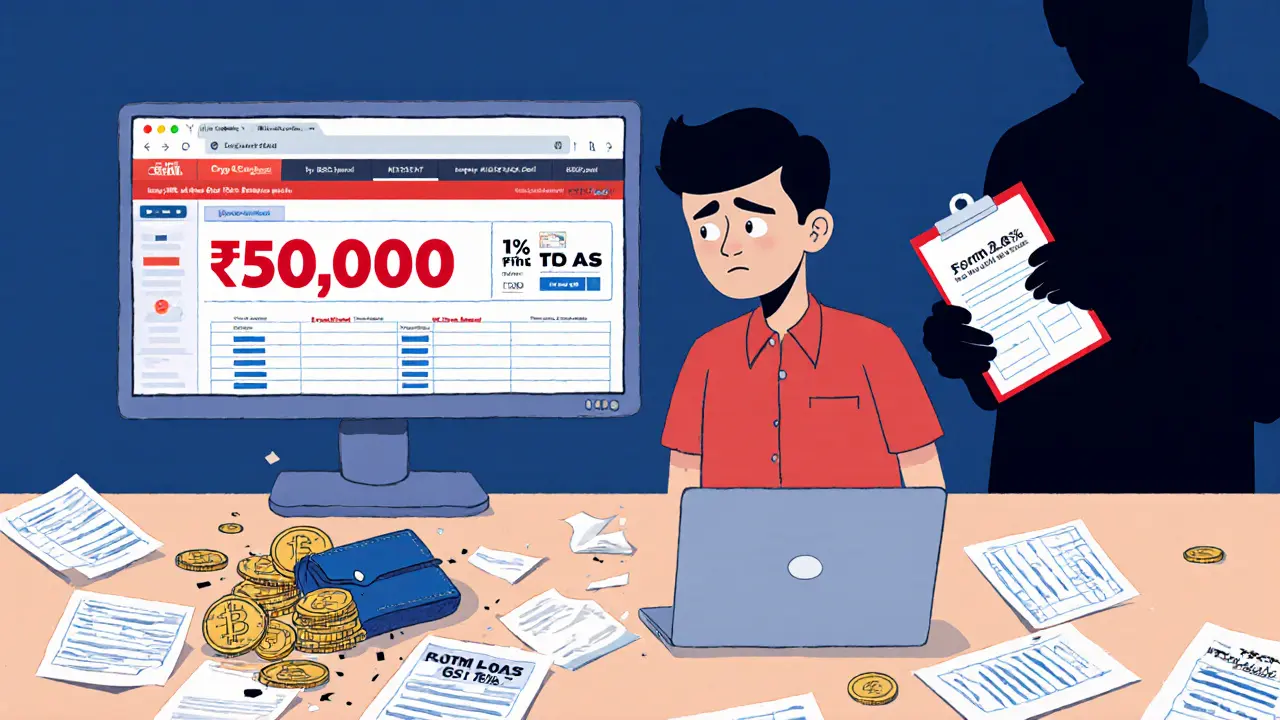1% TDS Crypto India: What It Means for Traders and Taxpayers
When you buy or sell crypto in India, a 1% TDS, a tax deducted at source on cryptocurrency transactions under India’s Income Tax Act is automatically pulled from your trade. It’s not an income tax—it’s a withholding tax. That means every time you trade, even if you’re breaking even or losing money, 1% of the total trade value gets sent to the government. This rule, introduced in July 2022 and still active in 2025, applies to every trade on Indian exchanges and even P2P deals if they’re routed through regulated platforms. It’s not about profits. It’s about volume. And it’s changed how people trade.
This TDS on cryptocurrency, a mandatory deduction applied to every crypto trade in India is separate from the 30% capital gains tax. You pay both. The 1% TDS is collected upfront by the exchange and filed under your PAN. You get a TDS certificate at year-end, which you can use to offset your final tax bill. But here’s the catch: if you trade frequently, that 1% adds up fast. A single $1,000 trade? $10 gone before you even see the result. Do that ten times a week? That’s $520 a year just in TDS, regardless of whether you made money. And unlike in countries with progressive tax systems, India doesn’t refund TDS if you end up with a net loss. You still paid it. You just might get it back later—if you file correctly.
Many traders think this tax is a way to stop crypto. But it’s not. It’s a way to track it. The government wants visibility. That’s why even unregulated P2P trades are now being monitored through bank reporting rules. Exchanges like WazirX, CoinDCX, and ZebPay all report TDS data to the Income Tax Department. And if you’re using Binance P2P or other offshore platforms, your bank might still flag your transactions if they see regular crypto-related deposits. The India crypto regulation, the evolving legal framework governing digital asset trading and taxation in India isn’t about banning crypto—it’s about controlling the flow of money. That’s why you need to keep records. Not just for your own peace of mind, but because the tax department now cross-checks crypto trades with bank statements, UPI logs, and even wallet addresses linked to your identity.
What you’ll find in the posts below are real stories from Indian traders who’ve been caught off guard by this rule, guides on how to calculate your TDS liability, and breakdowns of which platforms handle it automatically versus which leave you scrambling at tax time. You’ll also see why some traders are shifting to margin trading or using derivatives to avoid triggering TDS—and why that might be riskier than just paying it. There’s no magic workaround. But there is a way to do this right. And it starts with understanding what 1% TDS really means for your wallet, your trades, and your future filings.

1% TDS on Crypto Transactions in India Explained: What You Need to Know in 2025
India's 1% TDS on crypto transactions automatically deducts tax on every trade, sale, or spend. Learn how it works, who it affects, and what you need to do in 2025 to stay compliant.
© 2025. All rights reserved.